The Nvidia GeForce 16 series has been expanded further with the launch of GeForce GTX 1630 which now is the lowest card in the series. GTX 1630 is an entry-level card that has been introduced to replace GT 1030 which is one of the most popular entry-level cards in the market. GT 1030 is very popular because of its very low power consumption and smaller form factor and these two things make it a popular choice among pre-built SFF systems and low-power systems with a smaller capacity power supply. GTX 1630 can prove a better alternative to the GT 1030 because GTX 1630 is more powerful than GT 1030 and the also power consumption is on the lower side. The competitor of GTX 1630 from AMD is RX 6400 which is an entry-level graphics card based on AMD’s latest RDNA 2 GPU architecture. So, if you want to know how these three cards stack against each other, then I am going to compare them based on various important parameters.
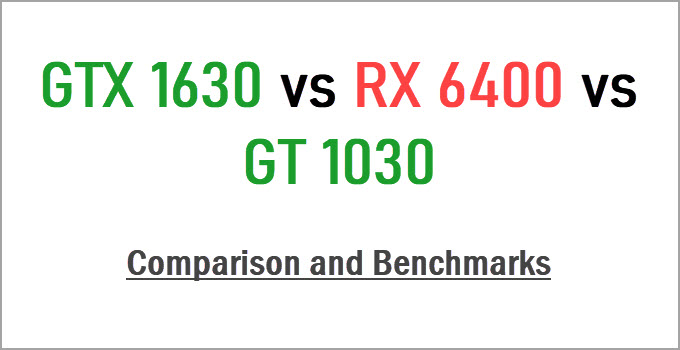
Note: In this comparison, the GeForce GT 1030 card used is the GDDR5 one as GT 1030 also comes with DDR4 memory but the GT 1030 DDR4 version is too underpowered compared to the GDDR5 one and is not worth buying at all.
GTX 1630 vs RX 6400 vs GT 1030 Comparison
Below is the comparison between GTX 1630, RX 6400, and GT 1030 graphics cards based on their specifications, performance, pricing, power consumption, and features.
GPU Architecture
GTX 1630 is built on the Turing GPU architecture on the 12nm fabrication process. It uses TU117 GPU chip and comes with 512 CUDA Cores. On the other hand, GT 1030 uses a relatively older architecture which is Pascal and is built on a 14nm manufacturing process. It comes with 384 CUDA Cores and uses GP108 chip.
RX 6400 is an AMD card and is powered by AMD’s latest GPU architecture which is RDNA 2 and is built on a smaller 6nm manufacturing process. The card uses Navi 24XL GPU chip and comes with 768 Stream Processors. The comparison between CUDA Cores and Stream Processors cannot be done on the basis of their core count as both are implemented in different GPU architectures and that too from different manufacturers.
Read: CUDA Cores vs Stream Processors Difference
| GTX 1630 | RX 6400 | GT 1030 | |
| GPU Chip | TU117 | Navi 24XL | GP108 |
| GPU Architecture | Turing | RDNA 2 | Pascal |
| Fabrication Process | 12nm | 6nm | 14nm |
| CUDA Cores/Stream Processors | 512 CUDA Cores | 768 Stream Processors | 384 CUDA Cores |
| Ray Tracing Cores | NA | 12 | NA |
| Tensor Cores | NA | NA | NA |
Video RAM [VRAM]
GTX 1630 and RX 6400 come with 4GB GDDR6 memory having a 64-bit interface but running at different speeds. The video memory of GTX 1630 runs at a speed of 12 Gbps producing a bandwidth of 96 GB/s while that of RX 6400 runs at a higher speed of 16 Gbps and delivers a bandwidth of 128 GB/s. GT 1030 comes only with 2GB GDDR5 memory that runs at a slower speed of 6 Gbps and offers a bandwidth of 48 GB/s.
| GTX 1630 | RX 6400 | GT 1030 | |
| Memory Size | 4GB GDDR6 | 4GB GDDR6 | 2GB GDDR5 |
| Memory Interface | 64-bit | 64-bit | 64-bit |
| Memory Speed | 12 Gbps | 16 Gbps | 6 Gbps |
| Memory Bandwidth | 96 GB/s | 128 GB/s | 48 GB/s |
Features
All three cards support DirectX 12 Ultimate, OpenGL 4.6, and G-Sync/FreeSync variable refresh rate technologies. Radeon RX 6400 supports PCIe 4.0 interface but it is limited to x4 lanes only while GTX 1630 supports PCIe 3.0 at x16 and GT 1030 supports PCIe 3.0 at x4. GTX 1630 is the only card here that supports hardware encoding. RX 6400 supports HDMI 2.1 but the remaining two supports HDMI 2.0b interface only. When it comes to resolution upscaling technology to gain more performance or frame rate in games then RX 6400 supports AMD FidelityFX Super Resolution (FSR) while GTX 1630 and GT 1030 lack DLSS (Deep Learning Super Sampling).
| GTX 1630 | RX 6400 | GT 1030 | |
| Bus Interface | PCI Express 3.0 (x16) | PCI Express 4.0 (x4) | PCI Express 3.0 (x4) |
| DirectX | 12 Ultimate | 12 Ultimate | 12 Ultimate |
| OpenGL | 4.6 | 4.6 | 4.6 |
| Vulkan | 1.2 | 1.2 | 1.2 |
| SLI/CrossFire | No | NA | No |
| VR Ready | No | No | No |
| G-Sync/FreeSync | Yes | Yes (FreeSync) | Yes (FreeSync) |
| Hardware Encoding | Yes | No | No |
| HDMI 2.1 | No | Yes | No |
| Ray Tracing Support | No | No | No |
Gaming Performance
Here are the benchmarks of these cards at 1080p resolution in the popular and latest AAA games.
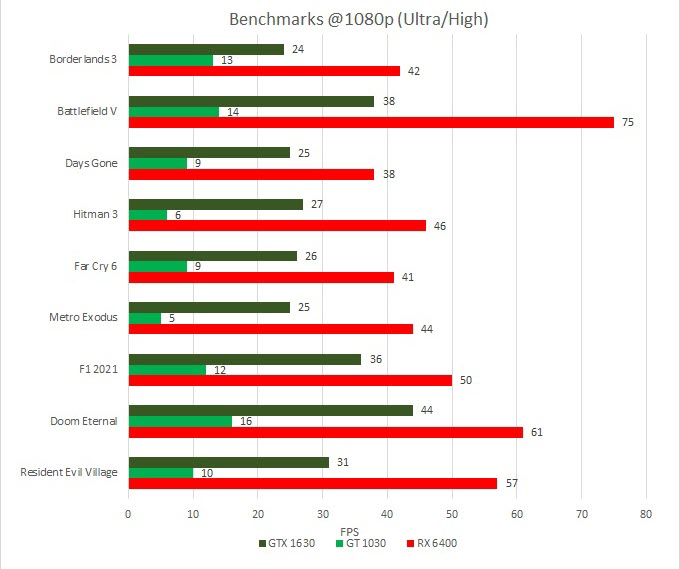
From the above benchmarks, we can see that GTX 1630 is almost 3x faster than GT 1030 and is around 55% slower than the RX 6400 on average.
Power Consumption
When it comes to power consumption, GT 1030 is the most power-efficient card here with a power consumption of merely 30W. The second position in terms of power consumption is held by RX 6400 at 53W and the card that comes last in terms of power consumption is GTX 1630 with a power consumption rating of 75W. All RX 6400 and GT 1030 models do not require external power via PCI-Express power connectors but some dual-fan GTX 1630 models do require a 6-pin PCIe connector for power.
| GTX 1630 | RX 6400 | GT 1030 | |
| Power Consumption | 75W | 53W | 30W |
| Recommended PSU | 300W | 350W | 300W |
Pricing and Availability
The GTX 1630 is priced at 150 USD and the official or base MSRP for RX 6400 is 159 USD. The launch price or base MSRP for GT 1030 is 79 US Dollars but it is being sold at a higher price as of now. You can check the latest prices for all these three graphics cards from the links given below.
Check GTX 1630 Price on Amazon
GTX 1630 vs RX 6400 vs GT 1030 Specifications
| GTX 1630 | RX 6400 | GT 1030 | |
| GPU Chip | TU117 | Navi 24XL | GP108 |
| GPU Architecture | Turing | RDNA 2 | Pascal |
| Fabrication Process | 12nm | 6nm | 14nm |
| CUDA Cores/Stream Processors | 512 CUDA Cores | 768 Stream Processors | 384 CUDA Cores |
| Ray Tracing Cores | NA | 12 | NA |
| Tensor Cores | NA | NA | NA |
| Memory Size | 4GB GDDR6 | 4GB GDDR6 | 2GB GDDR5 |
| Memory Interface | 64-bit | 64-bit | 64-bit |
| Memory Speed | 12 Gbps | 16 Gbps | 6 Gbps |
| Memory Bandwidth | 96 GB/s | 128 GB/s | 48 GB/s |
| Bus Interface | PCI Express 3.0 (x16) | PCI Express 4.0 (x4) | PCI Express 3.0 (x4) |
| DirectX | 12 Ultimate | 12 Ultimate | 12 Ultimate |
| OpenGL | 4.6 | 4.6 | 4.6 |
| Vulkan | 1.2 | 1.2 | 1.2 |
| SLI/CrossFire | No | NA | No |
| VR Ready | No | No | No |
| G-Sync/FreeSync | Yes | Yes | Yes |
| Power Consumption | 75W | 53W | 30W |
| Recommended PSU | 300W | 350W | 300W |
Related:
Final Thoughts
Well, GTX 1630 can become a value proposition card if priced competitively i.e. if it was priced close to the pricing of GT 1030. However, it is priced close to that of RX 6400 which is a much more powerful graphics card and is better suited for running the latest games and eSport titles at playable frame rates. Also, in terms of power efficiency, GTX 1630 falls slightly behind RX 6400. So, in my opinion, if you are thinking of getting a power-efficient card that also offers decent performance then getting an RX 6400 is a wise decision. If you have anything to add or want to ask something then do let me know in the comment section below.
(*This post may contain affiliate links, which means I may receive a small commission if you choose to purchase through the links I provide (at no extra cost to you). Thank you for supporting the work I put into this site!)
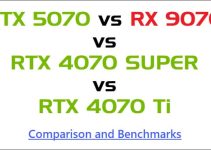
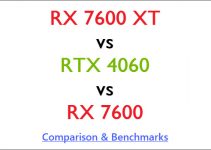
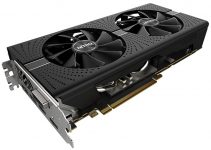
It seems like the 1630 is not even close to challenging the 6400… are these really direct competitors? The 6400 uses less power and provides higher performance, so it should be a clear winner. Even if the 1630 was half the price of the 6400, you’re still paying for it in your electric bill in the long run. What am I missing?
AMD’s 6400 seems more of a competitor to nVidia’s 1650, barely edging it out in everything but AV1 decoding.
You are right!